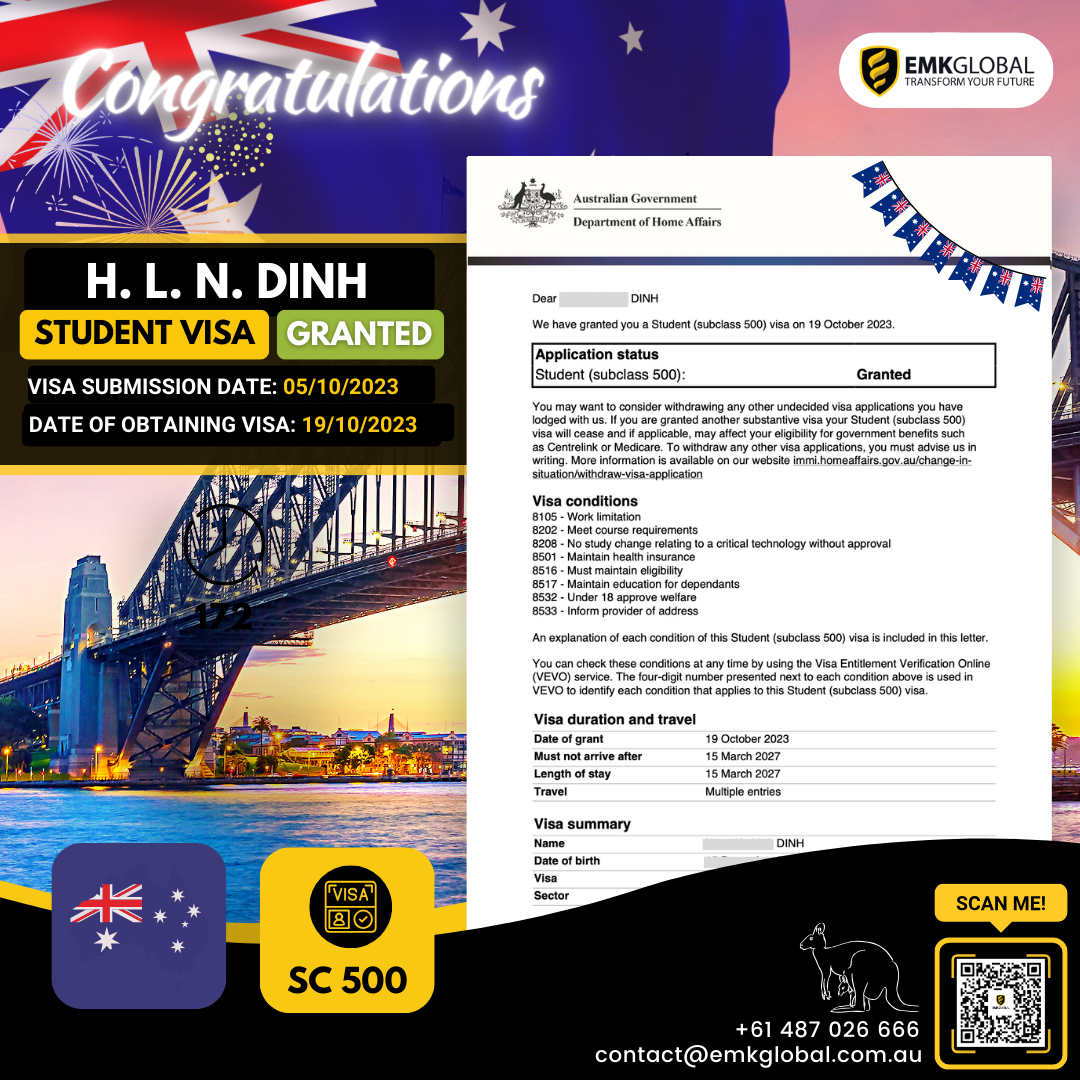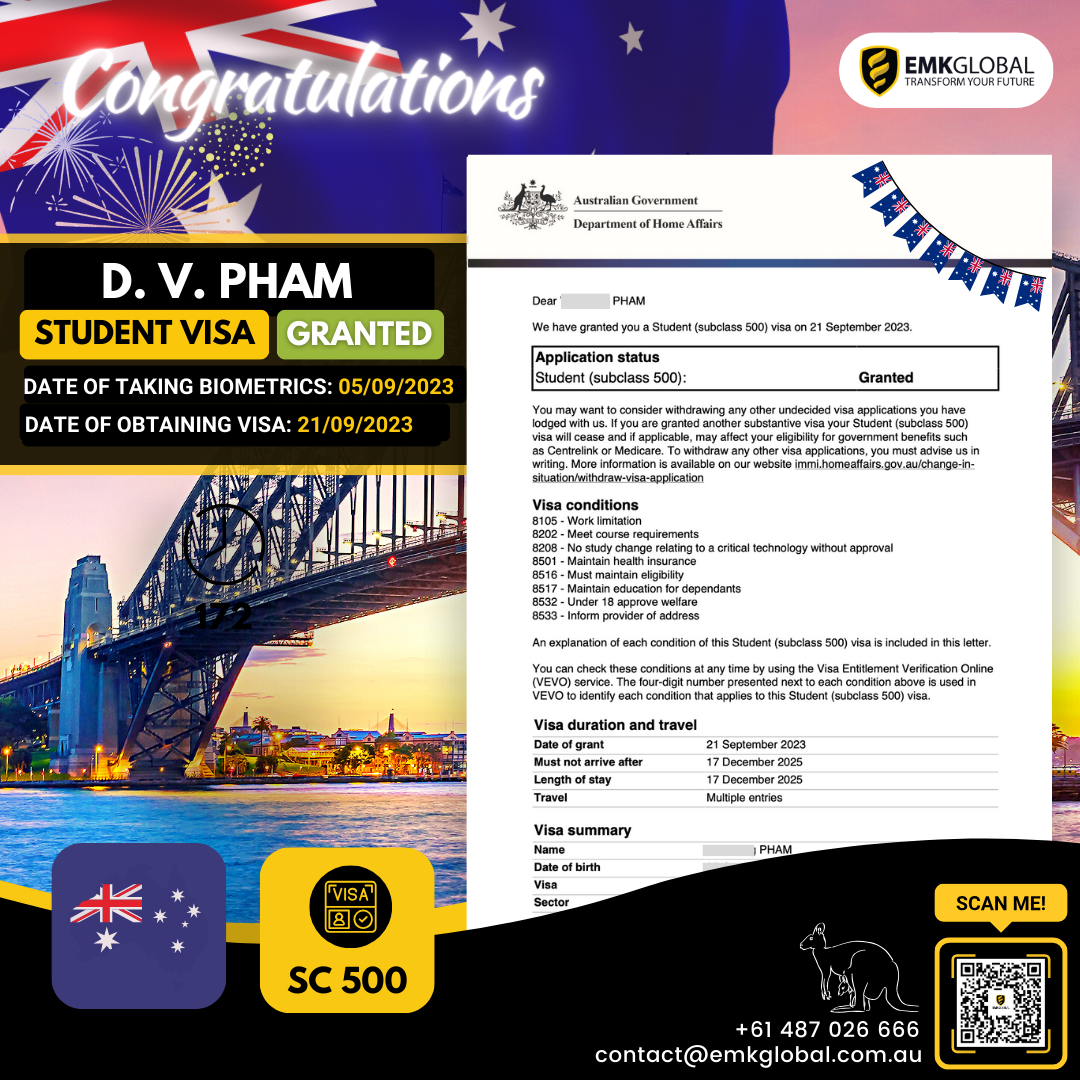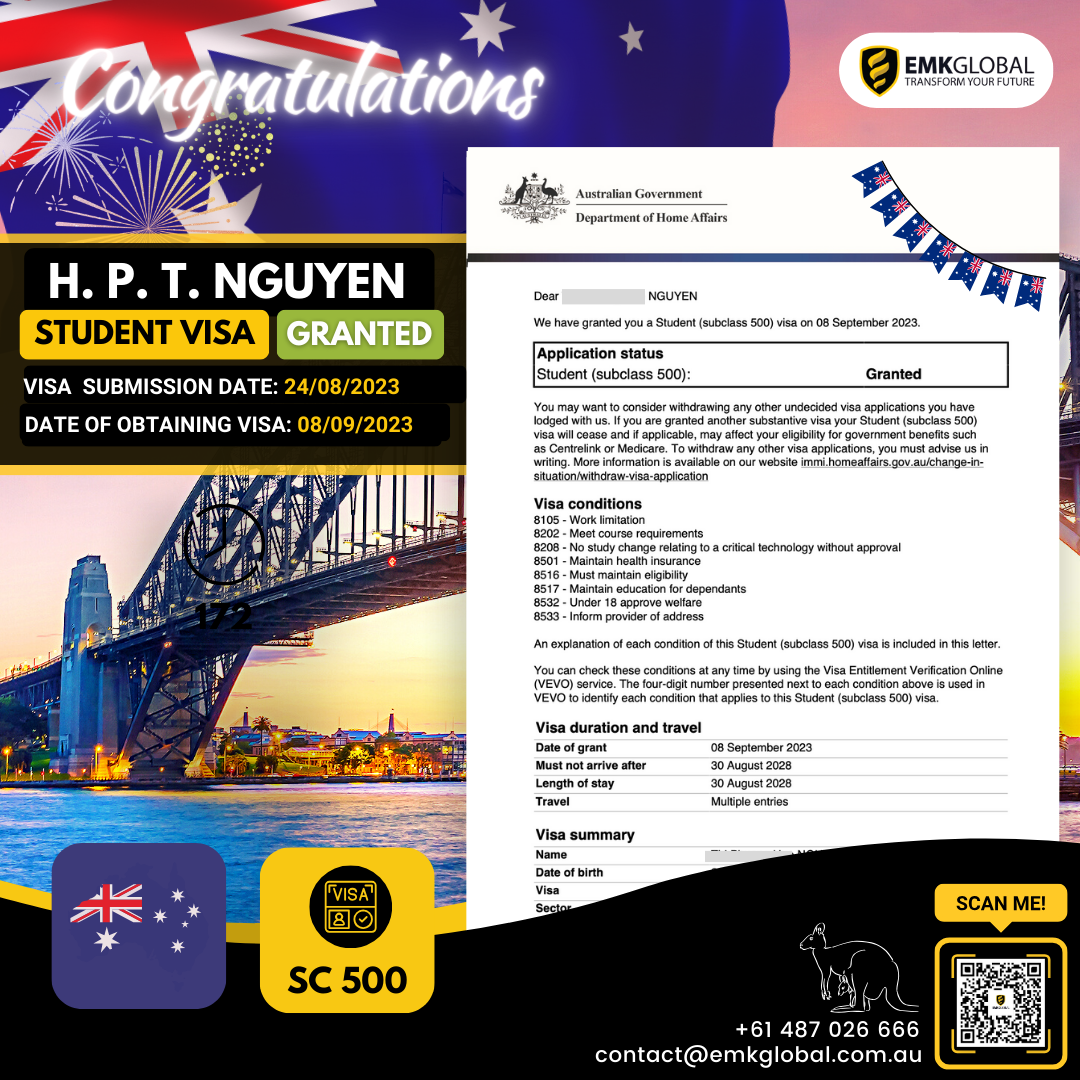CONGRATULATE MS. NGUYEN THI TRANG FOR CONQUERRING STUDENT VISA AFTER ONLY 4 DAYS OF FINGERPRINT BIOMETRICS
– Visa submission date: October 25, 2023
– Biometrics: October 30, 2023
– Visa date: November 3, 2023
– Course: Master of Business Management at Central Queensland University
– Scholarship: 25% of the entire course
Even though she already has a job as an Administrative Officer, Ms. Trang still wants to pursue her education and go further in her career with plans to study in Australia for a Master degree. Starting her journey to conquer higher education, Ms. Trang asked EMK for consulting support, as well as processing her application to study in Australia.
Facing many challenges such as risky place of birth & financial proof…, EMK successfully supported her to achieve Visa 500 and realize her dream of studying abroad with 7 pages of explanation to convince the LSQ just after 4 days of biometrics. EMK would like to wish Ms. Trang good luck and many achievements during her study in Australia.













